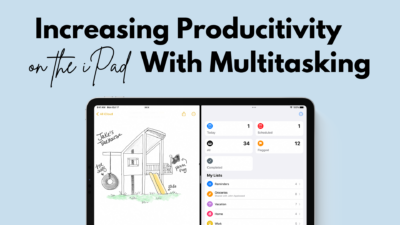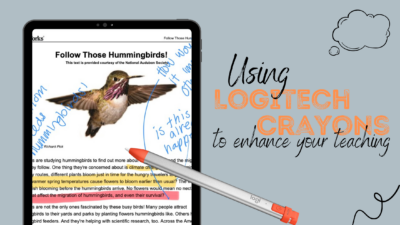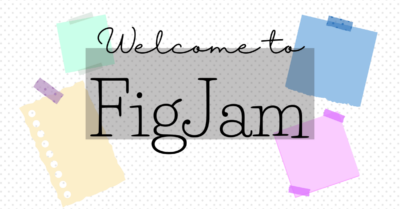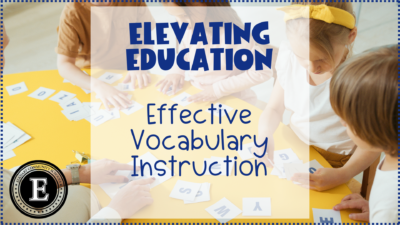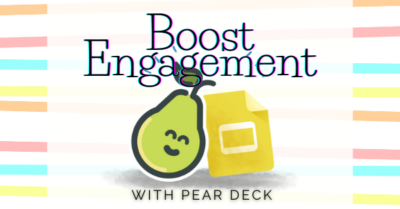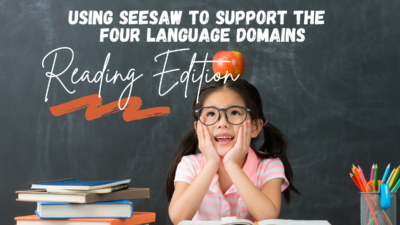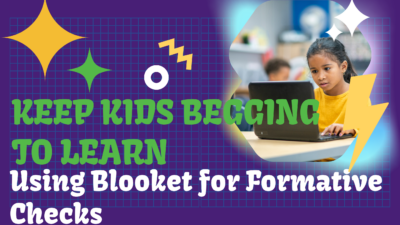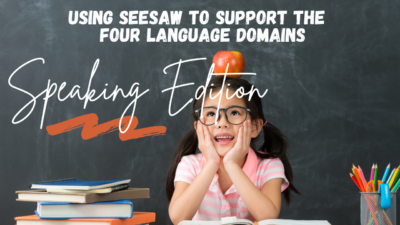Holly Mecher
Increasing Productivity on the iPad with Multi-Tasking
Keeping students engaged with technology can be tough, but the iPad’s Split Screen feature helps. It allows students to use two apps simultaneously, making multitasking easy. From researching and note-taking to project collaboration, Split Screen keeps students organized and productive. Use this feature to help your students succeed in and out of the classroom!
Three Simple iPad Tools that Can Change the Game for Early Learners
Finding the right balance between using technology in an early learner classroom has always been a challenge. Finding tools and strategies that give you the most bang for your buck is critical. Below, you’ll see three of my quickest, high-impact technology usage in the early learner classroom!
Using Logitech Crayons to Enhance Your Teaching
Have you heard a bit about Logitech crayons, but are not sure what they are, how they work, or how you might use them in the classroom? Below is a quick guide on how to use your Logitech crayon, and also how to bring it into your classroom for maximum impact. What is a Logitech Crayon? Logitech Crayon is a digital pencil designed to help students express their creativity and complete assignments in new ways. It has an easy-to-grip shape that keeps the pencil from rolling off the desk, a long-lasting battery that provides up to 8 hours of charge...
Introducing FigJam!
Have you heard the (pretty old but might be new to you) news? Google is waiving bye-bye to Jamboard, as of October 2024. So what do we do now? I want to introduce you to FigJam. FigWhat? FigJam is a great alternative to Jamboard, and may actually be a superior platform. Allowing FigMa to introduce itself: “FigJam is an online whiteboard where possibilities turn into plans. Teachers can facilitate collaborative group learning while encouraging active participation from students. It’s best suited for classroom discussions, brainstorms, and group work.” FigJam Education Be sure to get verified for FigJam Education. This will help you...
Enhance Whole-Class Instruction with an IXL Group Jam
If you are looking for how to utilize IXL in whole-group learning, a Group Jam is what you want! Picture the perfect blend of IXL and Kahoot. IXL Group Jam introduces an exhilarating approach for classrooms to collaborate on mastering an IXL skill! In a Group Jam session, every student encounters the same IXL question simultaneously, and you’ll have a chance to review the question together as a class. You can choose the difficulty, or level, of each question. Throughout an IXL Group Jam, educators can promptly assess their entire class’s grasp of the subject matter, empowering them to make...
Elevating Education: Effective Vocabulary Instruction
Let’s delve into a topic that lies at the heart of effective teaching: vocabulary instruction. We all understand its importance—it’s essential for comprehension, expression, and critical thinking. But how do we ensure our instruction isn’t just about exposure but truly facilitates understanding and retention? In this post, we’re taking a deep dive into the art and science of vocabulary teaching. We’ll explore evidence-based strategies, practical methodologies, and insights to enhance your instructional practices. Why Vocabulary Instruction? Teaching vocabulary is essential for fostering academic success and narrowing the pervasive vocabulary gap observed among students. Research indicates stark differences in vocabulary knowledge...
Boost Engagement with Pear Deck
Pear Deck is a powerful yet user-friendly platform designed specifically for educators to create captivating and interactive lessons. Its versatility makes it an invaluable asset, particularly for elementary school teachers seeking to create a stimulating and inclusive learning environment. In today’s fast-paced educational landscape, engaging students in the classroom can often be a challenging task. Traditional teaching methods sometimes struggle to captivate young minds and maintain their focus. However, in this digital age, innovative tools like Pear Deck have emerged as a game-changer, transforming the learning experience by making it more interactive, dynamic, and enjoyable. PearDeck is a Google Slides...
Supporting English Language Learners by Integrating Digital Content with Discovery Education
As a teacher, one of the biggest challenges you may face is finding ways to support English Language Learners in your classroom. While it can be difficult to meet the diverse needs of these students, one powerful resource that you may want to consider is Discovery Education. Discovery Education is an online platform that provides a wealth of resources and tools to support students’ learning. This platform can be particularly helpful for our EL population, as it offers a range of features that can help build background knowledge, support vocabulary development, and strategies to help students meet content objectives. Building...
Using Seesaw to Support the Four Language Domains: Writing Edition
Seesaw is an amazing place to include student writing. When thinking about writing lessons, we need to keep in mind that writing involves not only putting thoughts and ideas into words in written form, but also knowing & using the appropriate vocabulary, spelling, and grammar to convey meaning, knowing and using the appropriate form for the type of writing, and the difference between formal and informal writing. It also includes the skills of revising, editing, and publishing.
Using Seesaw to Support the Four Language Domains: Reading Edition
The language domains, listening, speaking, reading, and writing, are the 4 ways that people can interact with language. Two of these skills, speaking and writing, are described as productive skills as we create language with each of these. The other two skills, listening and reading, are receptive skills because we use these skills to receive information from an outside source. In this post, we will focus on ways that you can practice the language domain of reading by using Seesaw.
The top three Epic features that I didn’t utilize when teaching and should have.
We talk about accessible learning in our department possibly daily. It comes up in almost every conversation we have. Despite this, the one thing we’ve never said about accessible learning is that it’s easy because frankly, it isn’t. Ensuring that all of your students, regardless of ability and language, have the same level of access to content is a huge challenge for a teacher. One free tool for teachers that can help to bridge that gap is Epic. Epic is a freemium tool (keep an eye out for the “🔒Unlimited” books that are not available with the free account) that...
Keep Kids Begging to Learn: Using Blooket as a Formative Check
Need a fun way to do a quick formative assessment? Try out Blooket as a fun way to check what your students know in the moment! Blooket is a game-based, freemium program (meaning you can pay for premium, but the free version is still amazing) that keeps kids begging to play “one more round!” How to start a Blooket: Create or Discover a Set When looking to start with Blooket, you first need to decide if you want to create your own set or discover a set that has already been created. I recommend taking a peek at already created...
Using Seesaw to Support the Four Language Domains: Speaking Edition
The language domains, listening, speaking, reading, and writing, are the 4 ways that people can interact with language. Two of these skills, speaking and writing, are described as productive skills as we create language with each of these. The other two skills, listening and reading, are receptive skills because we use these skills to receive information from an outside source. In this post, we will focus on practicing the language domain of speaking and how Seesaw can help you meet this need.
